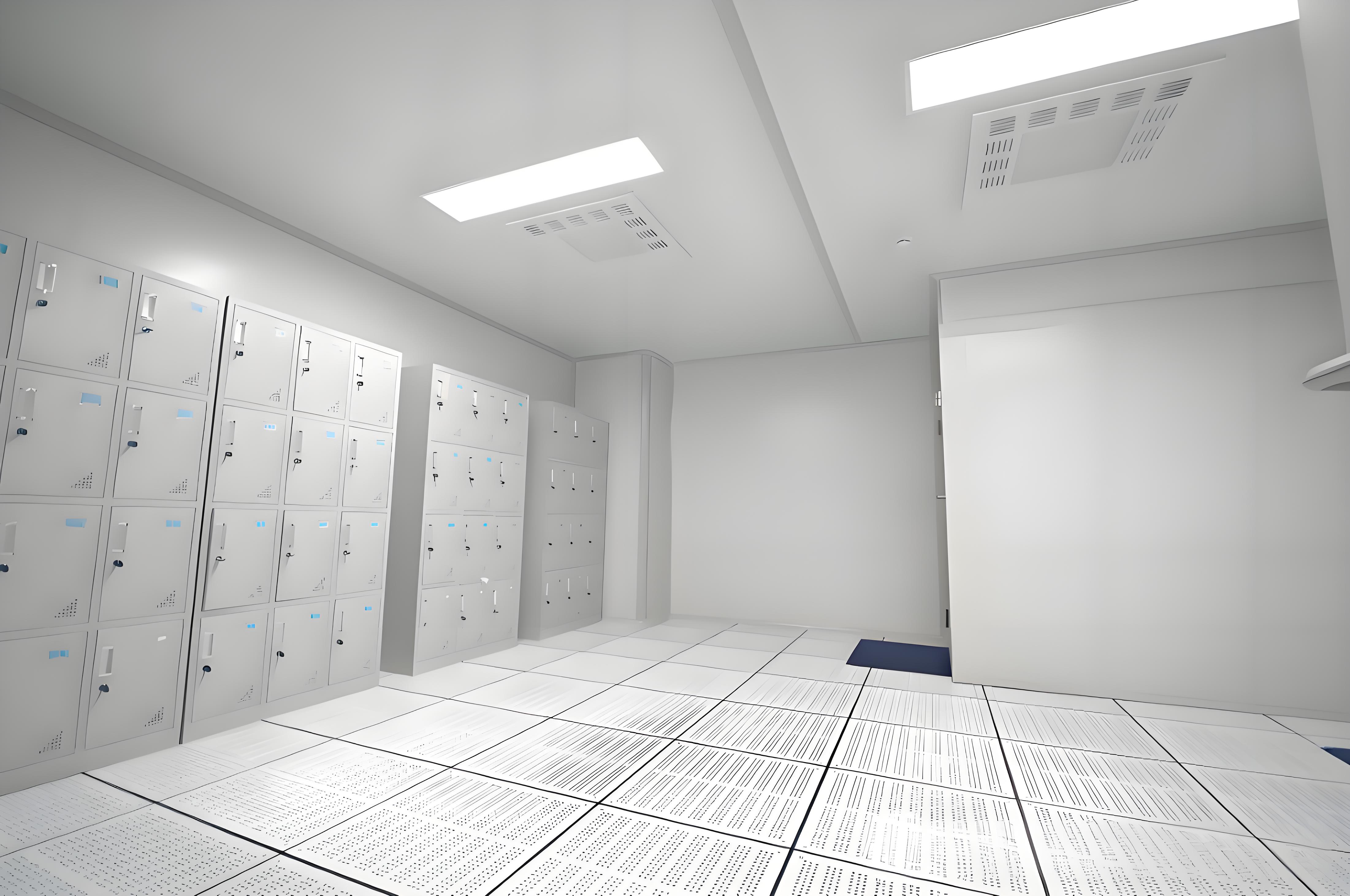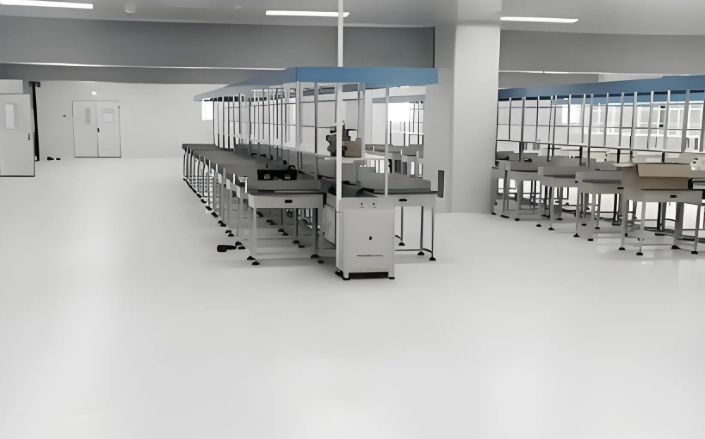




Clean rooms are critical environments in industries such as pharmaceuticals, biotechnology, semiconductor manufacturing, and healthcare, where controlling contamination is paramount. At the heart of maintaining these sterile conditions lies the clean room exhaust system, a sophisticated engineering solution designed to remove contaminants, control air pressure, and ensure compliance with stringent regulatory standards. This system is not just an auxiliary component but a vital part of cleanroom infrastructure, impacting everything from product quality to worker safety. In this article, we explore the intricacies of clean room exhaust systems, covering key aspects like the Exhaust System for Cleanrooms, cleanroom air exhaust processes, how to design a cleanroom exhaust system, and Cleanroom Exhaust Engineering Systems. We will also delve into common problems that can arise, providing a holistic view for professionals seeking to optimize their facilities. By understanding these elements, you can enhance the efficiency and reliability of your cleanroom operations, ensuring a controlled environment that meets industry demands.
The importance of a well-functioning clean room exhaust system cannot be overstated. It works in tandem with supply air systems to maintain air balance, prevent cross-contamination, and adhere to standards like ISO 14644. Whether you are involved in facility management, engineering, or compliance, this article offers practical insights into the design, engineering, and troubleshooting of these systems. We will break down complex concepts into digestible sections, using real-world examples to illustrate key points. From fundamental principles to advanced engineering considerations, you will gain a comprehensive understanding of how exhaust systems contribute to cleanroom performance. Let's begin by examining the role of an Exhaust System for Cleanrooms and why it is essential for contamination control.

An Exhaust System for Cleanrooms is specifically engineered to expel contaminated air, particles, and hazardous substances from the cleanroom environment. Unlike standard ventilation systems, it must handle unique challenges such as maintaining pressure differentials, filtering exhaust streams, and complying with environmental regulations. The primary function of this system is to ensure that airborne contaminants, generated by processes or personnel, are effectively removed without compromising the cleanroom's integrity. This involves a network of ducts, fans, filters, and controls that work together to create a safe and controlled atmosphere.
In cleanrooms, air quality is maintained through a balance of supply and exhaust air. The clean room exhaust system plays a crucial role in this balance by creating negative pressure in certain areas to prevent the escape of contaminants. For instance, in a pharmaceutical cleanroom, where toxic compounds might be handled, the exhaust system must capture and discharge these substances safely. Key components include high-efficiency particulate air (HEPA) filters, chemical scrubbers, and variable air volume (VAV) controls. These elements ensure that the exhaust air meets discharge standards while protecting the external environment. Understanding the basics of an Exhaust System for Cleanrooms is the first step toward effective implementation, as it sets the foundation for more detailed topics like cleanroom air exhaust and design principles.
Moreover, the clean room exhaust system must be tailored to the cleanroom classification. For example, ISO Class 5 cleanrooms require more robust exhaust handling than lower-class environments. This customization involves calculating air change rates, which typically range from 10 to 600 changes per hour depending on the application. By focusing on the Exhaust System for Cleanrooms, facilities can achieve optimal performance, reduce energy consumption, and extend the lifespan of equipment. In the next section, we will dive deeper into the specifics of cleanroom air exhaust, exploring how air is processed and expelled.
The term cleanroom air exhaust refers to the actual process of removing air from the cleanroom, including the treatment and disposal of contaminants. This aspect of the clean room exhaust system is critical for maintaining indoor air quality and ensuring that exhausted air does not pose a risk to the outside environment. The process begins with air intake through grilles or hoods, often located near contamination sources like workstations or equipment. The air is then transported through ductwork, where it may undergo filtration or treatment before being discharged.
A key component in cleanroom air exhaust is the filtration system. HEPA filters are commonly used to capture particles as small as 0.3 microns, but in cases involving chemical vapors or gases, additional treatments like carbon adsorption or thermal oxidizers may be required. For instance, in semiconductor manufacturing, where volatile organic compounds (VOCs) are prevalent, the exhaust system might include scrubbers to neutralize acids. The clean room exhaust system must also account for airflow velocity and pressure drops to ensure efficient operation. Engineers often use computational fluid dynamics (CFD) simulations to model cleanroom air exhaust patterns, optimizing the layout for minimal turbulence and maximum containment.
Another important aspect is the integration of exhaust systems with building management systems (BMS). This allows for real-time monitoring of parameters like air velocity, pressure differentials, and filter status. By automating controls, facilities can respond quickly to changes in operational conditions, enhancing the reliability of the cleanroom air exhaust. Common practices include using pressure sensors to maintain negative pressure in exhaust zones and installing backup fans for redundancy. When designing a clean room exhaust system, it is essential to consider these components holistically, as they directly impact the effectiveness of cleanroom air exhaust. In the following section, we will explore how to design a cleanroom exhaust system, covering step-by-step considerations and best practices.
Designing an effective clean room exhaust system requires a methodical approach that balances technical requirements with practical constraints. The process of how to design a cleanroom exhaust system begins with a thorough assessment of the cleanroom's purpose, including the types of contaminants generated, the required cleanliness level, and regulatory standards. For example, a biotech lab handling pathogens will have different exhaust needs than an electronics cleanroom dealing with dust particles. Key steps include load calculation, system sizing, and component selection.
First, engineers must calculate the exhaust air volume based on factors like room size, air change rates, and process emissions. This involves using formulas to determine airflow requirements, often expressed in cubic feet per minute (CFM). Tools like ASHRAE standards provide guidelines for these calculations. Next, the design must incorporate pressure differentials to ensure contaminated air flows toward exhaust points rather than sensitive areas. This is part of the broader Cleanroom Exhaust Engineering Systems approach, which emphasizes integrated design. For instance, when planning how to design a cleanroom exhaust system, it is crucial to position exhaust grilles strategically—near contamination sources—to capture pollutants at the point of generation.
Ductwork design is another critical element. The layout should minimize bends and obstructions to reduce pressure drops and energy consumption. Materials must be compatible with the exhaust stream; for corrosive chemicals, stainless steel ducts might be necessary. Additionally, the clean room exhaust system should include redundancy, such as multiple fans or bypass options, to prevent downtime. Energy efficiency is also a key consideration; variable frequency drives (VFDs) can adjust fan speeds based on demand, reducing power usage. By following a structured process for how to design a cleanroom exhaust system, engineers can create systems that are both effective and sustainable. This leads us to the next topic: Cleanroom Exhaust Engineering Systems, which focus on the technical and regulatory aspects of implementation.

Cleanroom Exhaust Engineering Systems encompass the advanced technical and regulatory frameworks that govern the implementation of exhaust systems in cleanrooms. This goes beyond basic design to include aspects like system integration, compliance testing, and lifecycle management. Engineering these systems involves adhering to standards such as ISO 14644, FDA guidelines, and local environmental regulations. The goal is to create a clean room exhaust system that is not only efficient but also scalable and adaptable to future changes.
A core principle of Cleanroom Exhaust Engineering Systems is the use of modular components that allow for easy maintenance and upgrades. For example, filter housings might be designed for quick replacement, and control systems could be upgraded with software updates. Engineering also involves risk assessment—identifying potential failure points and implementing mitigation strategies. In practice, this might mean installing redundant fans or using leak-tight duct connections to prevent contamination leaks. The clean room exhaust system must undergo rigorous testing, such as particle counting and pressure mapping, to verify performance before commissioning.
Moreover, Cleanroom Exhaust Engineering Systems often incorporate sustainable practices, like heat recovery from exhaust air to reduce energy costs. In high-tech industries, engineering teams might use advanced materials like antimicrobial coatings on ducts to inhibit microbial growth. Collaboration with stakeholders—from facility managers to regulatory bodies—is essential throughout the engineering process. By focusing on Cleanroom Exhaust Engineering Systems, organizations can ensure their clean room exhaust system meets long-term operational goals. However, even with careful engineering, problems can arise. In the next section, we will discuss common issues in cleanroom exhaust systems and how to address them.
Despite careful design and engineering, clean room exhaust system can encounter various problems that compromise performance. Understanding these common issues is key to proactive maintenance and troubleshooting. One frequent problem is inadequate airflow, often caused by clogged filters or fan malfunctions. This can lead to pressure imbalances, allowing contaminants to spread. Regular monitoring of cleanroom air exhaust velocity and filter status can help detect such issues early. For instance, if pressure differentials drop below setpoints, it might indicate a blockage in the ductwork.
Another common issue is noise and vibration, which can stem from imbalanced fans or poor duct support. This not only affects worker comfort but can also indicate mechanical wear. Implementing vibration dampeners and scheduling routine fan inspections are effective mitigation strategies. Leaks in the ductwork are also problematic, especially in systems handling hazardous materials. These can result from poor installation or corrosion, leading to environmental breaches. Using smoke tests or ultrasonic leak detectors during maintenance checks can identify leaks before they escalate.
Energy inefficiency is another challenge, often due to oversized systems or lack of controls. For example, a clean room exhaust system running at full capacity unnecessarily wastes energy. Integrating smart controls, like VFDs, can optimize operation based on real-time demand. Additionally, compliance failures can occur if the system does not meet evolving regulations. Regular audits and updates to Cleanroom Exhaust Engineering Systems are necessary to stay current. By addressing these common problems, facilities can maintain the reliability of their clean room exhaust system and avoid costly downtime. In conclusion, a well-maintained system is essential for long-term success.
In summary, the clean room exhaust system is a cornerstone of cleanroom functionality, integral to contamination control and regulatory compliance. From the foundational aspects of an Exhaust System for Cleanrooms to the detailed processes of cleanroom air exhaust, and the systematic approach of how to design a cleanroom exhaust system, we have covered the essential elements that make these systems effective. The engineering behind Cleanroom Exhaust Engineering Systems ensures that designs are robust and adaptable, while awareness of common problems enables proactive management. By prioritizing proper design, regular maintenance, and continuous improvement, organizations can maximize the performance of their clean room exhaust system, safeguarding both product quality and environmental safety. As industries evolve, staying informed about best practices in exhaust system management will be crucial for maintaining competitive and compliant cleanroom operations.